| |
|
|
|
Clement Olin Stevenson, Jr
Lieutenant (junior grade)
VR-7, NAVAIRPAC United States Navy Ridgewood, New Jersey March 11, 1942 to June 17, 1966 CLEMENT O STEVENSON Jr is on the Wall at Panel 8E, Line 58 See the full profile or name rubbing for Clement Stevenson |
  |
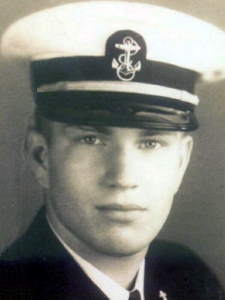
|
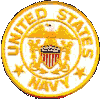
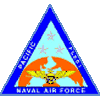
| |
|
June 17, 2020
At his death Navy Lieutenant (junior grade) C.O. Stevenson, Jr. was 24 years old. "C.O." was my elder brother. Our birthdays were two years plus two days apart, so as kids we always shared birthday parties. We grew up in Greenville, SC, the sons of families with roots in the Carolinas that went back to colonial times. Stevie with mother and father, Fort Benning, Georgia 1944
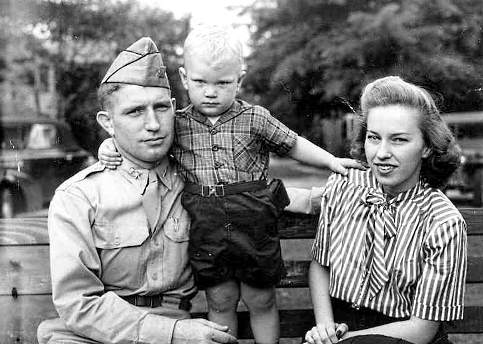
From early childhood, Stevie (who everyone just called "C.O." from about age ten) was a self-confident, self-directed, self-reliant, savvy, energetic, brave, tough, take-charge, impatient, risktaking and resilient-in-adversity lad. He set goals for himself and was relentless in their pursuit. He was perpetually pushing the envelope of parental permissions and constraints; his objectives were usually set two clicks beyond his current situation, and he persisted in eroding resistance at every hurdle until he prevailed. Looking back, those character traits comprised "all the right stuff" for his becoming a successful military pilot. Stevenson family & brothers Stevie and Billy, 1948
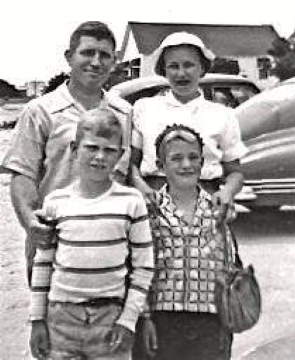
His love of aircraft and goal of someday flying one himself began when we were very young and our father (a WW2 Army veteran) took us to the nearby Donaldson Air Force Base on Armed Services Day each May. We were able to climb aboard the iconic WW2 and Korean War-era aircraft on display, and Stevie always went straight for the pilot's seat. Stevie in 1951 and family Christmas in 1953. Notice airplanes. Stevie next to Betsy.
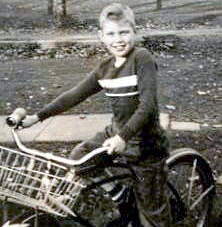
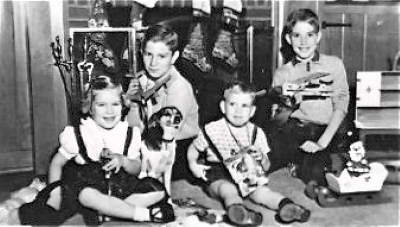
As pre-teens we spent many hours together building model aircraft, suspending them in flight from our bedroom ceiling, and going to sleep gazing up at them. From watching Victory at Sea, his favorites were the WW2 Navy fighters, the F6F Hellcat and F4U Corsair. When he was sixteen, he and I went off to separate private schools, in his case, to the Georgia Military Academy, where he quarterbacked the football team. C.O. as Georgia Military Academy cadet (1960)
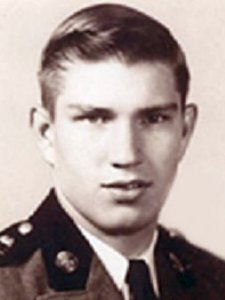
After trying unsuccessfully for an appointment to the Air Force Academy, he was awarded a full Navy ROTC scholarship to attend the University of North Carolina at Chapel Hill. His college summers were committed to his midshipman service at sea, most memorably, aboard the carrier U.S.S. Randolph when it retrieved Astronaut Gus Grissom from the sea off Florida after the second U.S. human spaceflight in July 1961. Upon his graduation from UNC in 1964, C.O. was commissioned as an Ensign in the Navy. He made his first carrier landing in May 1965 at NAS Pensacola FL, and was awarded his "Wings of Gold" after completing his fixed-wing training at NAS Corpus Christi, TX in October. C.O. receives Wings of Gold at NAS Corpus Christi (1965)
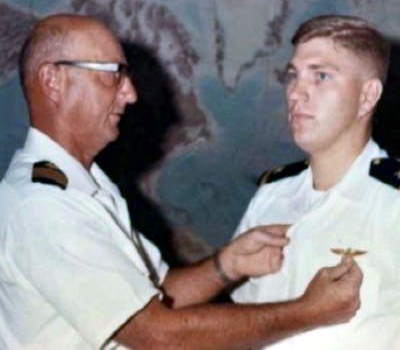
From there he was assigned from mid-December to the Naval Air Transport Wing, Pacific's (NATWP's) Squadron VR-7 operating under the 22nd Air Force and based at Moffett Field NAS, Mountain View CA, as part of the joint Air Force/Navy Military Airlift Command (MAC). VR-7's mission in 1966 was global airlift transport operations including frequent flights into the Southeast Asia combat zone in support of U.S. forces. C.O.'s last official photo
Moffett Field NAS (1965) 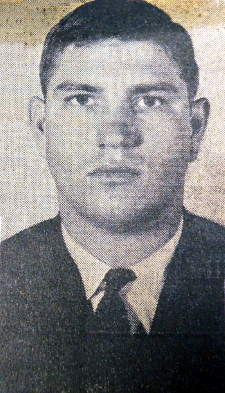
In early 1966 he completed ten weeks of C-130E training at Stewart AFB TN. When in April the Navy announced the disestablishment of NATWP by the end of the year (part of the Navy's withdrawal from MAC), he requested and was highly recommended by his Squadron and Wing commanders for jet training starting in early 1967, following which he would almost certainly -- given their need for replacements -- have been assigned to the 7th Fleet on YANKEE Station in the South China Sea as a carrier-based pilot, carrying out bombing missions over North Vietnam.
But it was never to be. On 17 June 1966, during his first operational mission to the Western Pacific, he was co-pilot aboard a C-130E Hercules
aircraft (SN 637785) that departed Cam Ranh Bay AB, South Vietnam en route to Kadena AB, Okinawa.
MAC/NATWP C-130E Hercules at Moffett Field NAS (1966)
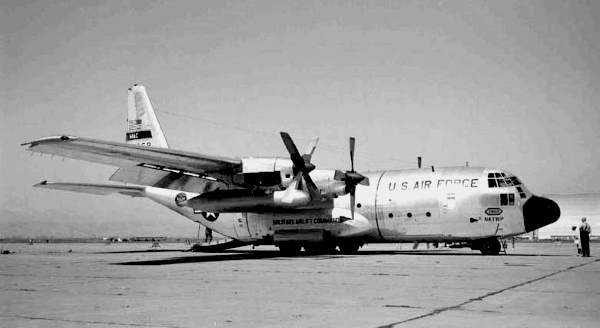
Aboard the flight were the eight Navy crewmembers and six "ride-along" Air Force passengers, along with 6.5 tons of cargo. About twenty minutes after takeoff, the crews of two Navy vessels cruising nearby observed the C-130 explode and crash into the South China Sea. Three ships arrived at the crash scene and began an immediate search. The accident took place so swiftly that it was assumed all aboard perished instantly. Some debris and wreckage were recovered, but only one body. An Air Force accident investigation board report (AIBR finally obtained in 2019 after a 15-year search) determined the loss to be from enemy action, but reached no conclusion on what caused the aircraft to explode as between hostile ground fire or sabotage. C.O.'s death triggered my own immediate recall from a combat operation and early return home during my tenth month in Vietnam as a Marine infantry scout. In 2006, our family succeeded in having a marker erected in his memory at the Arlington National Cemetery. Our parents were never told of the AIBR's findings describing the circumstances of their first-born child's death. 'In Memory Of' Marker Memorial Service (2006)
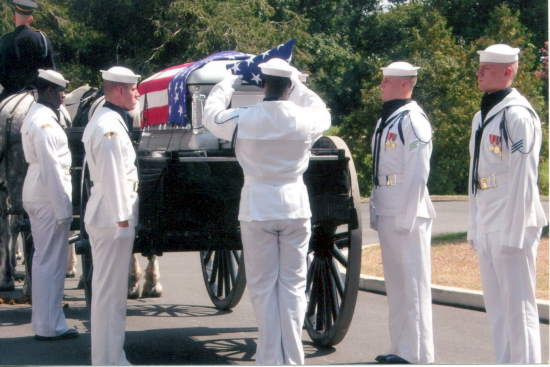
'In Memory of' Marker
Brother Bill at Arlington (2006) 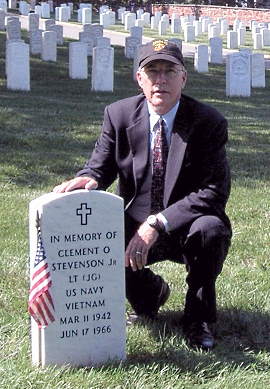
Information and photos Used with Permission of Bill Stevenson, brother Kenmore, Washington |
|
A Military Airlift Command (MAC) Navy C-130E Hercules tail number #63-7785 based at Moffett Naval Air Station, California crashed about 3 miles offshore Cape Varella, South Vietnam on 17 June 1966. It had taken off from Cam Ranh Bay Airbase and was about 20-minutes en route to Kadena AB Okinawa when it exploded and crashed into the South China Sea. MAC C-130E Hercules #63-7785 taxies at Moffett Field NAS (1965)
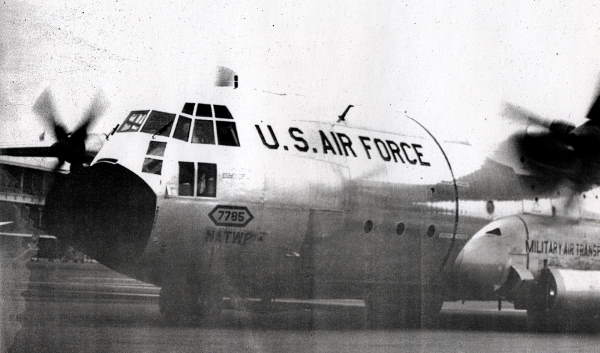
Two Navy vessels witnessed the explosion and arrived on scene of the wreckage within minutes. They searched until it was called off due to enemy fire in the area. There were no survivors among the eight Navy crewmembers and six USAF passengers. One AF passenger body and partial remains of three Navy crewmembers were recovered and identified on 21 June 1966 by the Air Force's Mortuary unit at Tan Son Nhut AB, Saigon. Early notifications to the family caused confusion and more grief. They were initially advised that it was an aircraft accident from unknown causes, that their son was missing and assumed dead, that his body had been recovered and confirmed dead, and then later still, that no remains were recovered. The family was also told by the Navy that a VC saboteur's bomb was suspected as the cause of the crash, but that an investigation was underway and that its summary findings would be communicated when available; they never were. Local and national newspaper articles reported the aircraft downing as an accident, but there were varying reports of the number (12-14) and names of casualties, and there was no reference to enemy action. Note this was the FINAL Casualty Report. It shows when missing and when declared dead.
It also states that it was a "Non-Battle" casualty resulting from an "aircraft accident". 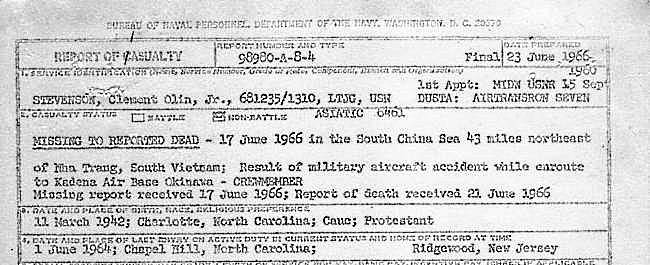
The Napa Valley Register (Napa, California), Friday 17 Jun 1966, Page 1
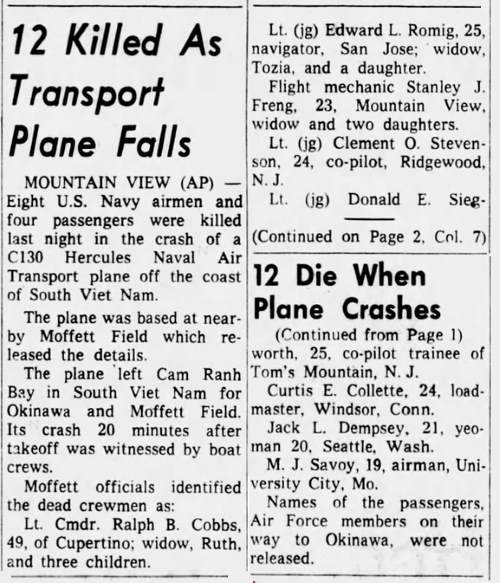
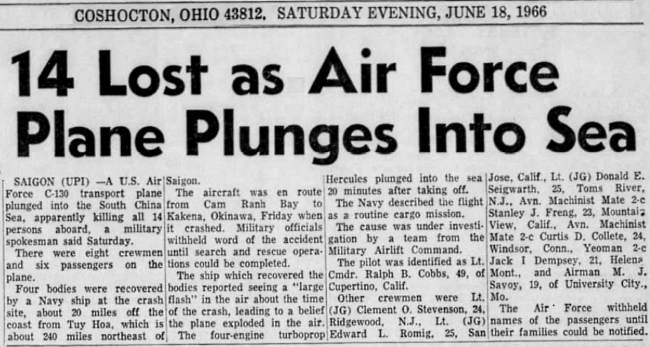
The News (Paterson, New Jersey), Saturday, 18 Jun 1966, Page 1
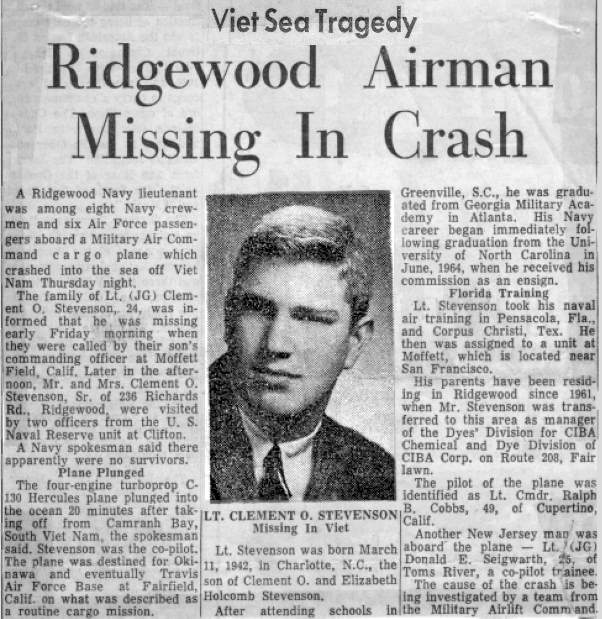
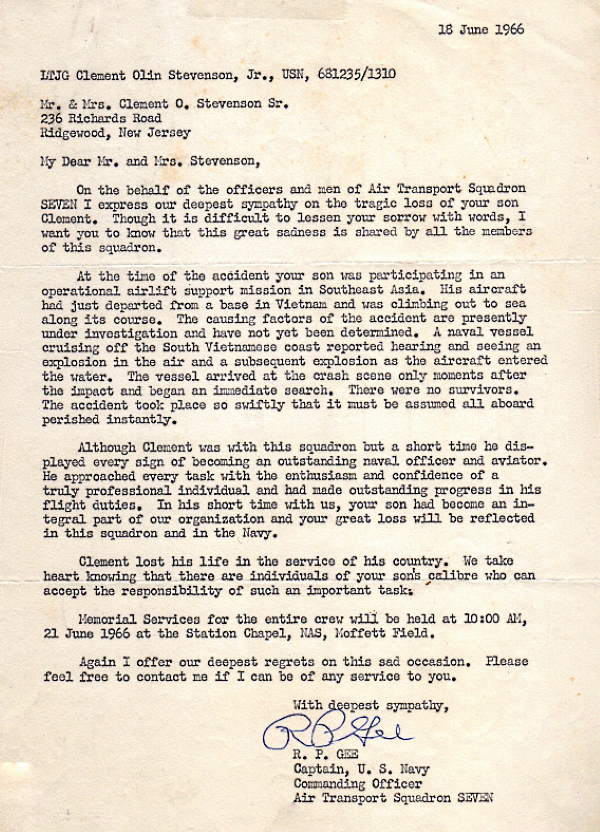
The Sunday News (Ridgewood, New Jersey), Sunday, 19 Jun 1966, page 1
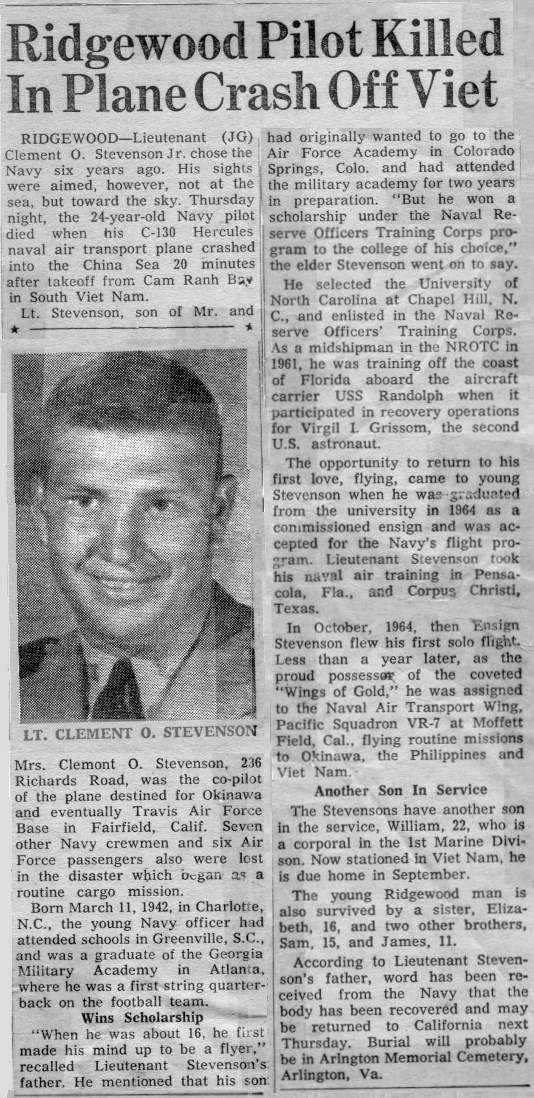
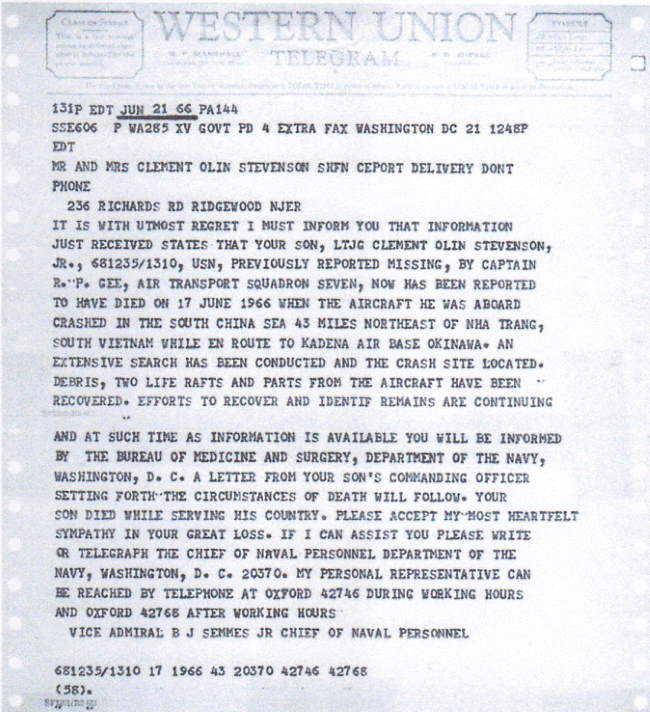
The aircraft was owned by the 22nd Air Force, whose accident investigation board (AIB) determined in it's report (AIBR, 3rd Qtr 1966) that the most probable cause of the crash was enemy action, either sabotage or hostile ground fire; the AIBR made no conclusion as to which. About 23 June 1966, the following information was posted to the Moffett News: "MEMORIAL RITES HELD - Memorial Services for the eight Moffett Field men who died Thursday when their plane mysteriously exploded and crashed off the coast of Vietnam were held Tuesday at the Field Chapel.
The family of LTJG Stevenson was never informed that his partial remains had been recovered, identified by his rare blood type, and sent to the
US Naval Hospital, Oakland CA on 15 February 1967. They were held one year and destroyed. As far as can be determined, the Collette and Freng
families were never notified either.
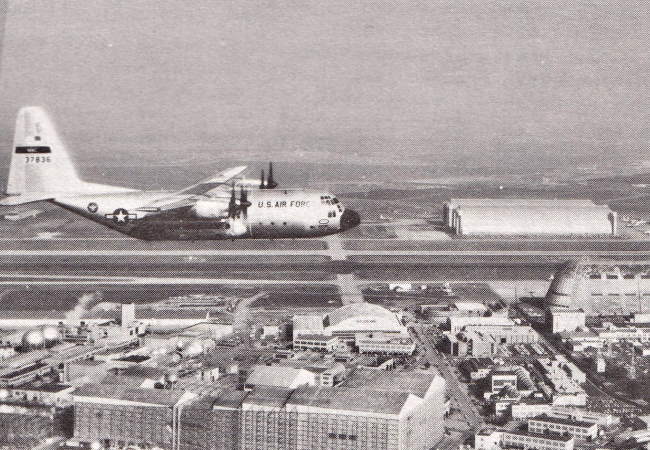
The 14 men who died in the combat loss of C-130E Hercules tail number #63-7785, from Moffett Field Naval Air Station were:
It is likely there are fourteen families that have never been told of the accident investigation's findings about the circumstances of their loved ones deaths as a result of enemy action. They may have had an inkling when in March 1967 the airmen were each awarded a posthumous Purple Heart for their wounds, even though their official records attribute their deaths to an accidental aircraft mishap. You can read more about this accident and investigation at Groups & Battles, C130 Down!, The Virtual Wall. LTJG Clement Olin Stevenson has an 'In Memory Of' cemetery marker in Arlington National Cemetery. His mother, Mary Elizabeth Holcombe Stevenson (1919-2013), father Clement Olin Stevenson (1915-1988) and brother James Holcombe Stevenson (1955-2018) are buried in Trinity Baptist Church Cemetery, Mooresboro, Cleveland County, North Carolina. In addition, he was survived by his sister Elizabeth Adams Stevenson and two brothers, William Edward Stevenson and Samuel Webb Stevenson. 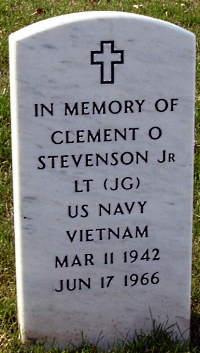
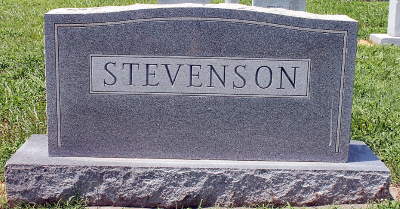
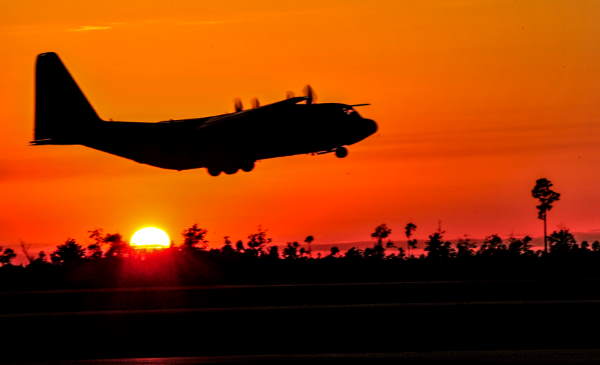
- - The Virtual Wall, 17 June 2020
|
| Contact Us | © Copyright 1997-2019 www.VirtualWall.org, Ltd ®(TM) | Last update 06/26/2020 |